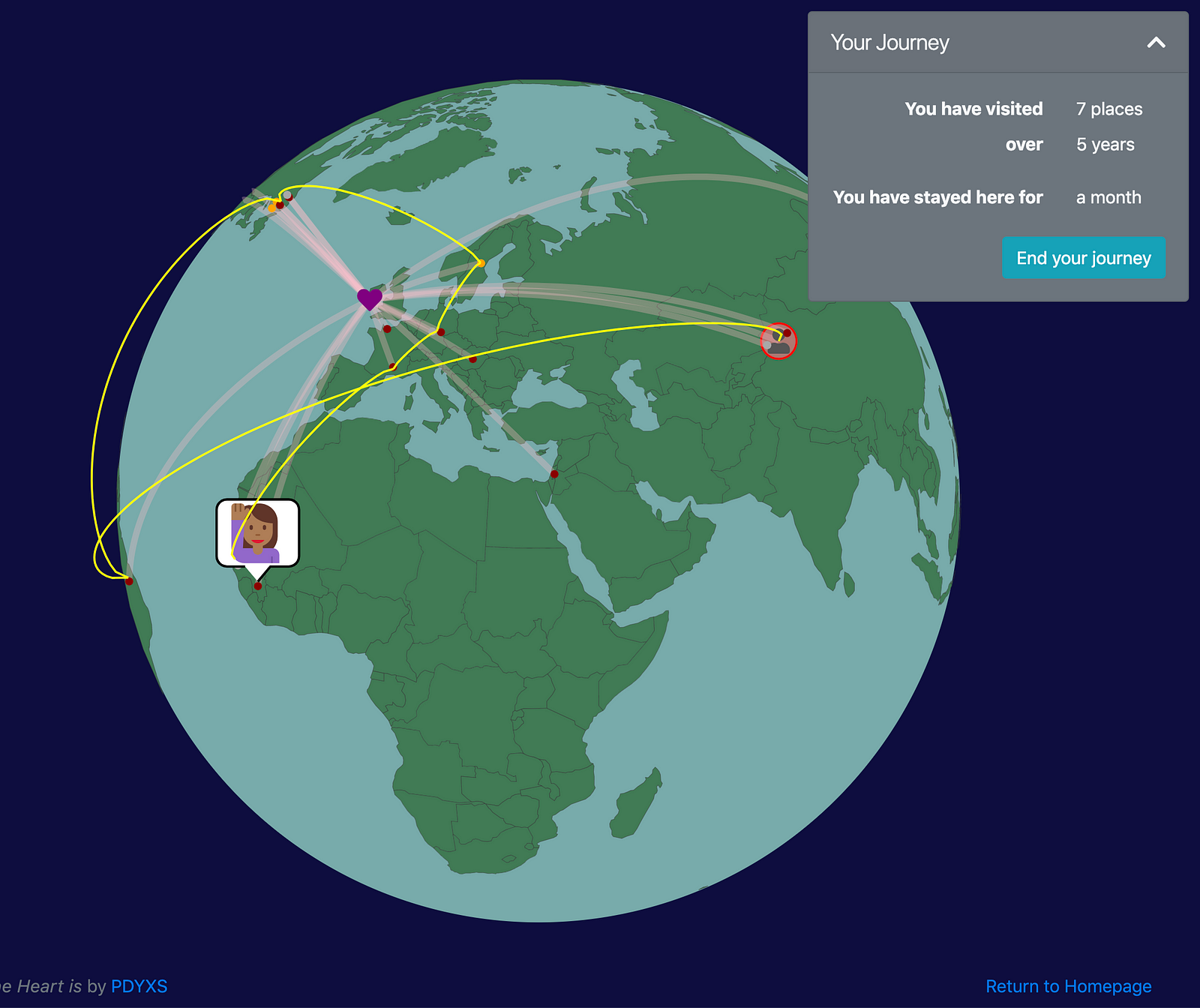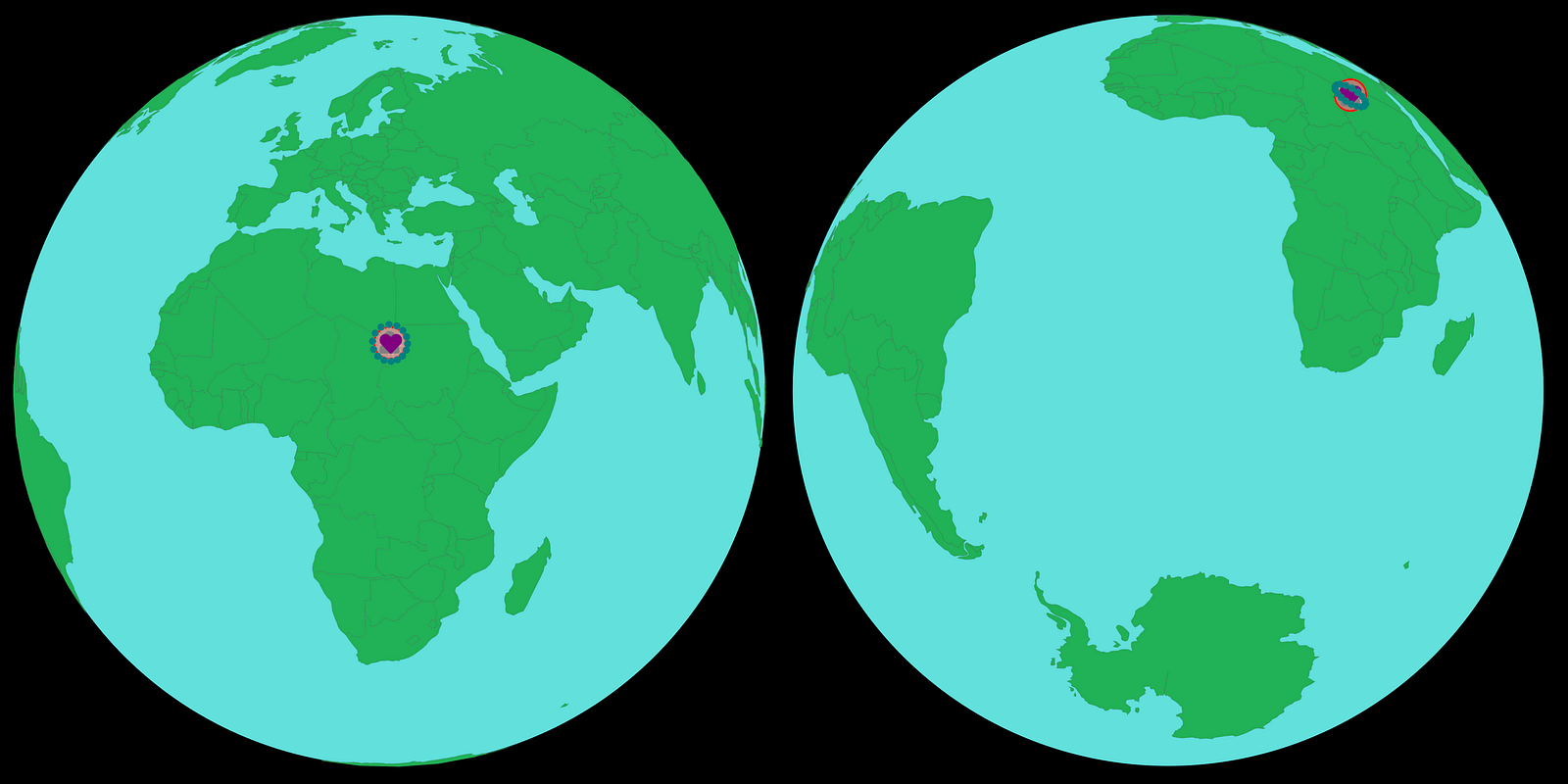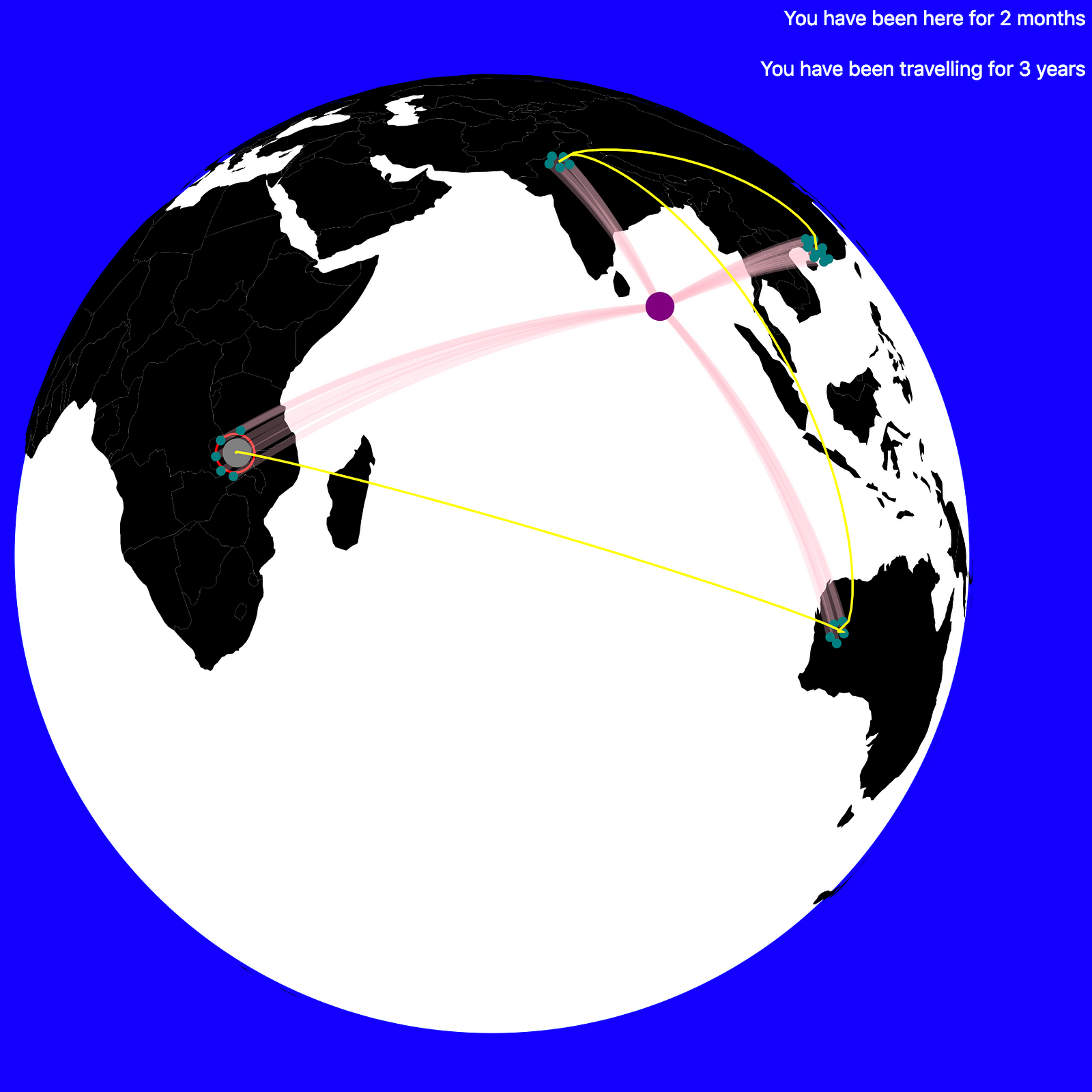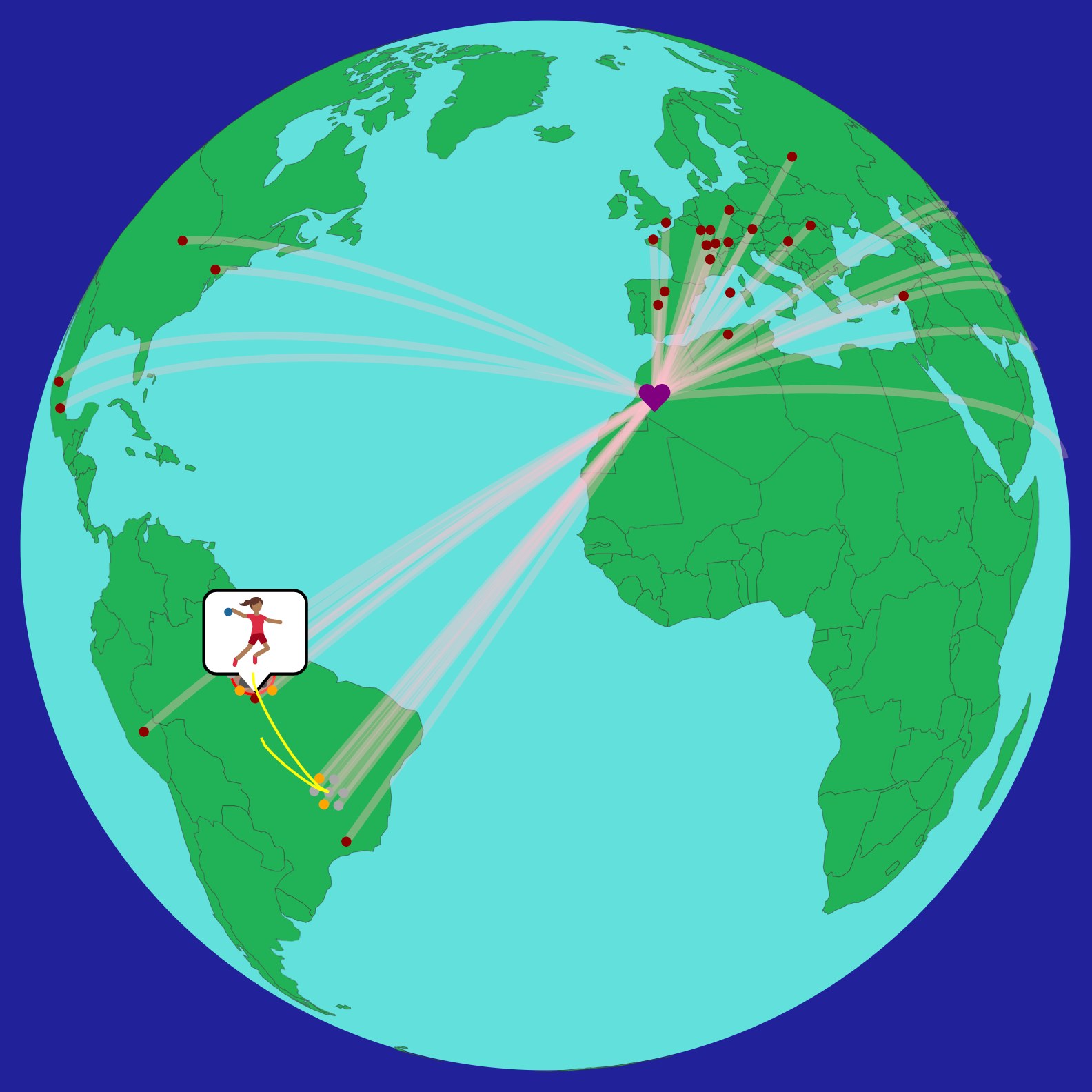Deciding Where the Heart Is: A Global Game Jam 2019 'game' postmortem
February 18, 2019
Originally posted on
 Medium
Medium
Deciding Where the Heart Is
A Global Game Jam 2019 “game” postmortem
The theme for Global Game Jam this year, ‘What Home Means to You’, struck me more than most. As a professionally homeless person, the question of what ‘home’ is has been an ongoing evolution. I don’t really consider Sydney ‘my home’ anymore, even though I do say “I’m going home in March” to mean “I’m going to Sydney in March”. But that’s mostly because I’m Australian (which means I’m lazy with language), I know people will understand me, and there’s 2 less syllables and probably another sentence of explanation less if I just use the ‘h’ word.
But the idea of home is still important, and there are definitely times in my travels that I feel like I’m at home, and times that I don’t. And while I wouldn’t exclusively call Sydney home, it has those qualities.
I guess that what I’m trying to say is that I don’t associate home with a singular place, in the way that “I’m going home in March” would suggest.
So when I was faced with this theme in a room full of Ecuadorians after sitting through 2 hours of game development talks I could only comprehend at a very surface level (mi español no es bueno), I knew that I wanted to make something about what I considered to be home.
Which meant that I was probably doing a solo project, as I probably wanted more creative control than would be fair to a team, and would be making something weirder than they wanted to. Which was very much confirmed after a very strange brainstorming session with an incredibly kind group, of which only half spoke English (let’s be honest: it was basically two semi-connected brainstorming sessions happening concurrently).
What came out of this is “Where the Heart is”. It’s not really a game, but it’s definitely an interactive thing.
If you haven’t tried “Where the Heart is”, maybe do that now. You can find it over at https://wheretheheartis.surge.sh
 The final product of “Where the Heart Is”
The final product of “Where the Heart Is”
The Vision
The basic premise behind ‘Where the Heart Is’ was that home, or that feeling of homeliness, is mostly about people. There’s definitely a feeling of understanding a place that’s a part of it as well, but the people make up the vast bulk of that feeling. Sydney feels like home because of the people I visit when I go there — it’s because of the people that I want to go back once a year.
There was a time when all of the people that meant home were in one place: Sydney. However, as I’ve travelled more and meet and have gotten to know more amazing people, and as the people I know move and travel themselves, home has stretched as well. It feels thinner, more tenuous, but also more diverse.
“Where the Heart Is” aims to visualise that feeling, by using a force-directed graph to have a person’s connections to various places pulling on their heart in a very visceral way. Players can choose where they travel (or if they travel), and see how their heart is stretched over time.
The Basics
The basic underpinning of this whole thing was to:
- have a globe that the player can rotate;
- have players click/tap on it to travel to places (only on land, sorry sailing/kayaking/shipping/boating/long-distance swimming/submarining enthusiasts);
- have connections pop up; and
- have a force-directed graph that dragged a heart around based on those connections (a force-directed graph is just a visualisation of connected objects, where the connections act like elastic bands that pull the objects around)
I’ll do a bit of a break-down of how I did these things below. Warning: here thar be tech-talk.
1. Making a globe
The basis of all of this was d3, which kind of does a lot of the work for you. A combination of this and some really nicely-formatted data made this pretty quick to put together.
It also helped that I’ve done this before, doing the prototype for Plan A’s homepage. The big sticking point for both projects was the drag to rotate interaction: it turns out that mapping x and y co-ordinates of mouse drags to 3D rotations isn’t trivial (or at least if you make it trivial, it’s not quite as smooth as you’d want it to be). With a ticking clock, I just did it the simple way: x axis movement rotates longitude and y axis movement rotates latitude, linearly (so moving m pixels always rotates n degrees). I popped some limits on the latitude rotations coz it felt better that way, and that was that. One day I’ll get around to putting together a really nice rotation algorithm for this: Jason Davies has some cool approaches for this, but I’ve got a few tweaks I’d want to make.
2. Click to move
This, at a basic level, was pretty easy. D3 has some great tools for moving from orthographic (globe) coordinates to screen coordinates and vice-versa.
Harder was making the lines between stops. I was pretty keen to have a record of where you’d been, and to have those actually leap off the globe as you hopped from place to place — this was important because the links to the heart were going to be on the surface of the earth, and it’d be hard to read if the lines were all on the same level.
Making things more difficult was the way that depth works in d3 when you’re using svgs (rather than webgl). The globe on the screen is actually a flat vector image that d3 is recalculating whenever you rotate it etc., which means that when you place, say, a point on the surface of the globe, you need to manually check if that point is on the hidden side of the globe and hide it if it is. For a line that actively changes height above the earth, this gets more complex. For simplicity’s sake, I simply split the line into tiny segments, and checked if each segment was on the ‘dark’ side (you’ll notice that the lines disappear too early, which is a symptom of this approach). There’s definitely better ways that I’ve thought of since (and it would’ve been awesome to give the lines a width that changed with distance from the viewer), but the clock was ticking!
 Making the ‘travel’ lines pop off the globe makes them easy to distinguish from
the ‘heart’ lines
Making the ‘travel’ lines pop off the globe makes them easy to distinguish from
the ‘heart’ lines
Making Connections
This was pretty trivial compared to the rest of this. Pop out an entity every so often, give the entity some sort of representation on the screen. There’s some fun things that happen to the look of these when they’re near the top/bottom of the globe (as I’m just using circles and they don’t warp the way that things on the surface of a globe should), but otherwise there’s nothing too crazy here.
 Left: A nice circle of circles. Right: hmmm….
Left: A nice circle of circles. Right: hmmm….
Forcing matters of the heart
Again, d3 came to the rescue here (OK, a lot of the initial vision may have come about because I knew that d3 did this pretty easily). d3-force is a force-graphing library that comes for free with d3, so it’s just a matter of plugging that in, right?
I mean, mostly it was that. There were a few things that showed up that were interesting:
- Making a force-directed graph that used orthographic co-ordinates properly took a bit of thought (basically a place at -179 longitude should be close to a place at +179 longitude, and the links between those things shouldn’t wrap the entire globe)
- Force-directed graphs generally like for all the nodes to just float where they like, which was decidedly not what I wanted. I wanted the heart to float wherever it wanted, the player’s current location to be completely fixed, and connection locations to be mostly fixed (with the caveat that they don’t overlap each other or the player location)
- Creating the lines linking the heart to the various connections is non-trivial: you can’t just make straight lines, because, well, they’ll be straight (instead of curving as they go around the globe). Luckily I’d solved a harder version of this for showing the lines of travel earlier, so maybe it was trivial.
A start to the heart
The features here are basically what I started with, and that version of the game was pretty damned ugly but was starting to take shape.
 The admittedly quite ugly first pass of “Where the Heart Is”
The admittedly quite ugly first pass of “Where the Heart Is”
Time Warps
Something that became clear pretty early on is that the game needed some sort of time component: that is, if you’re in a place, how long are you there? And how often do you make new connections in a place?
Something I wanted to model is how time when travelling doesn’t really work linearly: the first couple of days in a new place are always heightened and feel ‘slower’, and time then seems to speed up as you grow accustomed to the way that place works and the people there. And in a similar way, you’re much more likely to meet new people on your first day in a place than in your 30th. On the first day you’re more socially desperate, more willing to start conversations etc. Once you’ve made a few connections in a place, focus shifts to deepening those connections rather than making new ones.
So I added a timer for how long you’d been in a place, and tied it to an exponential curve: each second in real-world time takes longer in game time, based on how much game time has already elapsed. There’s a limit to the rate (1 game year every 4 real-world seconds), because otherwise the numbers go to infinity pretty quickly. Meanwhile, the rate of connections is based on real-world time only, simulating that effect of looking for connections more when you have less of them.
If I did this again, I’d probably slow down the overall timer a bit (though I’d keep the basic exponential curve): it goes a little too quickly for my liking. I’d also probably tie the rate of connections to the number of connections you have in that place.
Too many Arts to Art
As soon as I had connections showing up in places, I knew I needed to have more than dots to personalise these people. You needed some way to actually see who you’d met in each places and who was pulling at your heartstrings. Also without this, it really wasn’t clear that these were people at all.
Now, the immediate issue was that I wanted a wide variety of people, and there simply wasn’t time to draw that many people. So I turned to emoji, which gave me a lot of different people for free (thanks Twemoji!). As a bonus, emoji have a fair amount of diversity (it’s not perfect by any stretch, but it’s a pretty great start), and people already project emotion onto them.
I couldn’t just use all emoji, as there’s a lot that don’t really make sense in this context, and I didn’t want to spend time making complicated judgement calls, so I picked emoji that fit into 3 categories: people, animals and places. Anything that didn’t fit those categories (hand signals, groups of people, faces etc.) went away, and I made sure that the connections on the map were colour coded appropriately.
People moving
Finally, I got the people to move. Because people don’t always stay in the same place, and even if you aren’t the one travelling, those around you will.
To do this, I basically just made a field for each person that was the amount of time before they moved, in game time, and just kept track of that. Because it’s one of the last things I did, I wasn’t able to hone it as much as I’d like (people move way too much, and I’d have liked to have some sort of model of travel habits — constant travellers vs occasional vacationers etc.). But it works, so yay!
The more interesting thing to work out was where they moved. I needed to randomly generate co-ordinates that would definitely be on land (because otherwise the majority of people would move to the high seas), which isn’t super easy. Thankfully, there’s a lovely database of city locations made by Johan Dufor, all of which are on land! With a bit of data wrangling (to get the file size down, the original is 12.4MB!), I just had each person who moved move to a random city co-ordinate.
Which turned out to be a bit… well… I’m not sure exactly why this is, but it turns out that a large majority of the city locations in that database are in Europe. Which means that if you run “Where the Heart is” for long enough, most of your friends will move to Europe. I threw together an algorithm that would pick a random location on the globe and then choose the closest city to that point, but that also has problems: everyone moves to tiny islands in the pacific that you can’t see on the map. Also, that algorithm had some bugs that broke the whole game, so being a last-minute addition I had to roll it back.
So right now, according to “Where the Heart is”, all your friends will move to Europe. Whoops.
 They all go to Europe in the end…
They all go to Europe in the end…
Done and Dusted
So, that’s “Where the Heart is”. Overall, I’m pretty happy with where I ended up with it, though it definitely has some issues (most notably, I’ve avoided having the game explain itself at all really, and it could probably have a bit more handholding). Also some music would be nice.
A big thanks to the folks who organised the Quito site of the Global Game Jam. It was amazing to be able to participate and be welcomed in a place where I didn’t know the language, and it reminded me of how awesome the game development community is around the world.
Where to now?
I’m not going to continue with “Where the Heart is” in it’s current form — I like it as a Game Jam piece that’s a bit wonky and imperfect as Game Jam pieces tend to be.
I have, however, been thinking a lot about building a location-driven address book for myself: as I travel more, the thing I want to know more than anything is ‘who do I know here?’. And if I did that, I’d probably have it look very similar to “Where the Heart is”, but with real data. Hell, I might even give it the same name.
If that’s something you’d be interested in, sign up here and I’ll make sure you get access to alphas/betas etc. No promises on timing though, first I have to finish building a budgeting app (more on that later…).
In the meantime, I’d love to hear your thoughts on “Where the Heart is”: whether you were able to work out what the hell it was trying to do without a 2,500 word explanation; if the things I thought worked, did; if the things that I didn’t, didn’t; and anything else really.